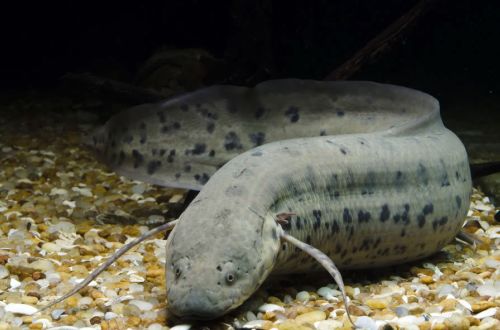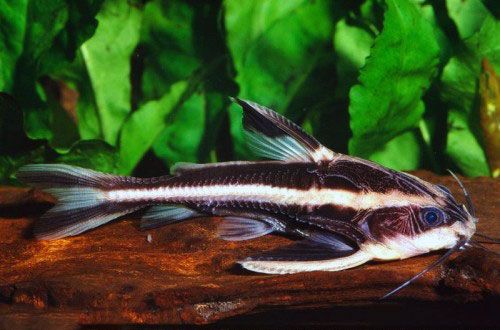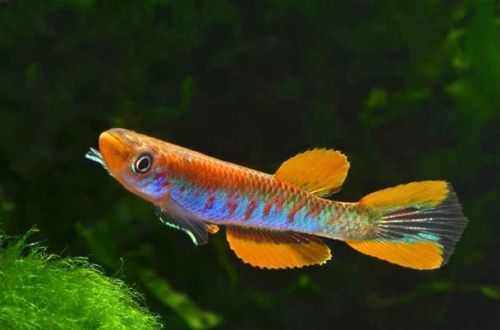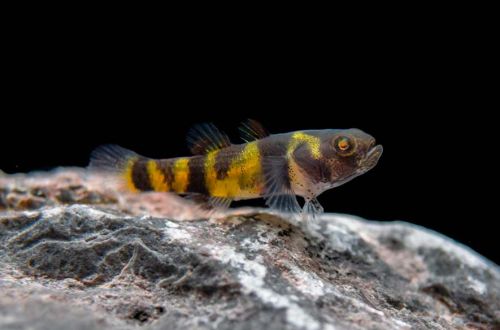
Protopter
Protopter or African lungfish, scientific name Protopterus annectens, belongs to the Protopteridae family. An amazing fish that has repeatedly become the hero of popular science documentaries from the BBC and Animal Planet about animals living in extreme conditions. Fish for enthusiasts, despite the simplicity in the content, not every aquarist will be ready to buy it, largely due to its atypical appearance.

Contents
Habitat
As the name implies, the fish comes from the equatorial and tropical parts of the African continent. The natural habitat covers many countries. Protopter is found in Sierra Leone, Guinea, Togo, Côte d’Ivoire, Cameroon, Niger, Nigeria, Burkina Faso, Gambia, etc. Inhabits swamps, floodplain lakes, as well as temporary reservoirs that dry up annually during the dry season. The latter are the main habitat of this fish, which has developed an amazing adaptation to survive without water for several months, more on that below.
Brief information:
- The volume of the aquarium – from 1000 liters.
- Temperature – 25-30°C
- Value pH — 5.0–7.5
- Water hardness – soft (1-10 dGH)
- Substrate type – soft, silty
- Lighting – subdued, dim
- Brackish water – no
- Water movement is weak
- The size of the fish is up to 1 m.
- Food – any food
- Temperament – aggressive
- Single content
Description
Adults reach a length of about 1 meter. The body is elongated and serpentine in shape. The pectoral and hind fins have changed, turning into thin, but muscular processes. The dorsal fin stretches almost along the entire body and smoothly passes into the tail. The color is gray or light brown with dark speckles. Fish can breathe not only in water, but also atmospheric air, hence the name “lungfish”.
Food
An omnivorous and absolutely unpretentious species, in nature it feeds on almost everything that it can find – small fish, mollusks, insects, amphibians, plants. Various foods can be served in the aquarium. The regularity of feeding also does not matter, breaks can reach several days.
Maintenance and care, arrangement of the aquarium
The sedentary lifestyle of the Protopter allows you to keep it in a relatively small aquarium from 1000 liters. Driftwood and smooth stones are used in the design. A soft substrate is welcome, but not really important. There is no need for living plants, especially since they are likely to be eaten. Dim lighting is installed. The filtration system is selected in such a way as not to create a flow of water, but at the same time provide high performance.
The aquarium is equipped with a lid, because if possible, the fish can crawl out. A sufficient air gap should be left between the lid and the water to ensure constant access to atmospheric air.
Maintenance procedures are standard – this is a weekly replacement of part of the water with fresh water and regular cleaning of organic waste.
Behavior and Compatibility
They are intolerant of relatives and pose a danger to other fish, even large ones, which they can bite and injure. Single content recommended.
Breeding / breeding
There are no successful cases of breeding in the home aquarium, due to the difficulties of keeping two adults in the same tank at the same time, as well as the need to recreate the external conditions. In nature, fish form temporary pairs for the spawning period. Males build nests, where the female lays eggs, and then guard it until the fry appear.
Fish diseases
Surprisingly hardy look. Usually, the main cause of most diseases in aquarium fish is unsuitable conditions. Lungfish are able to adapt to the harshest conditions, and when they become unbearable, they can hibernate.





